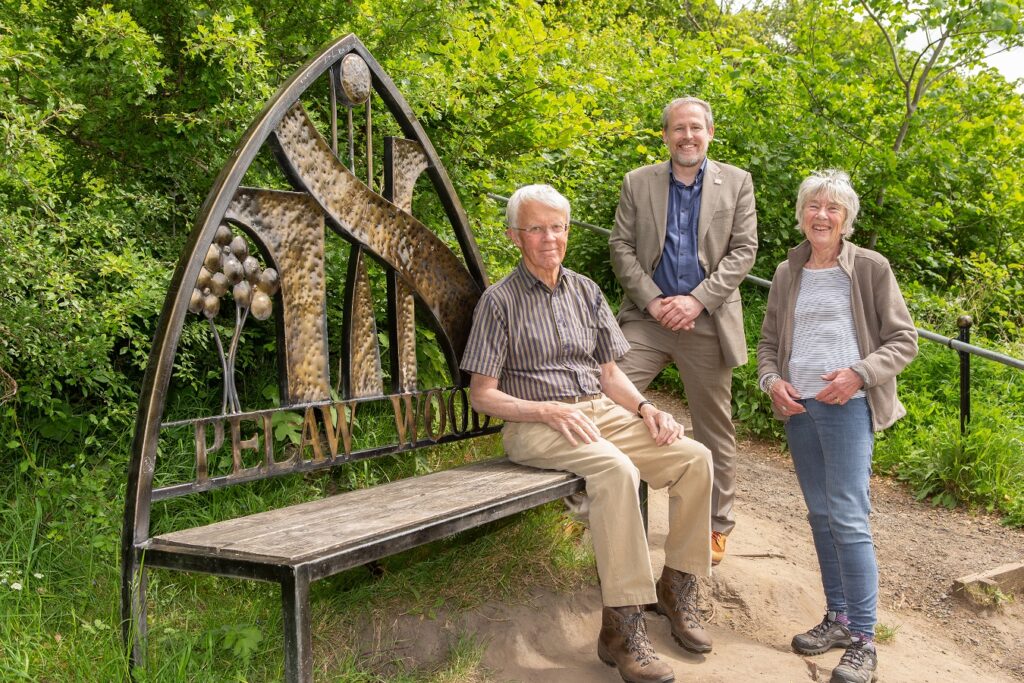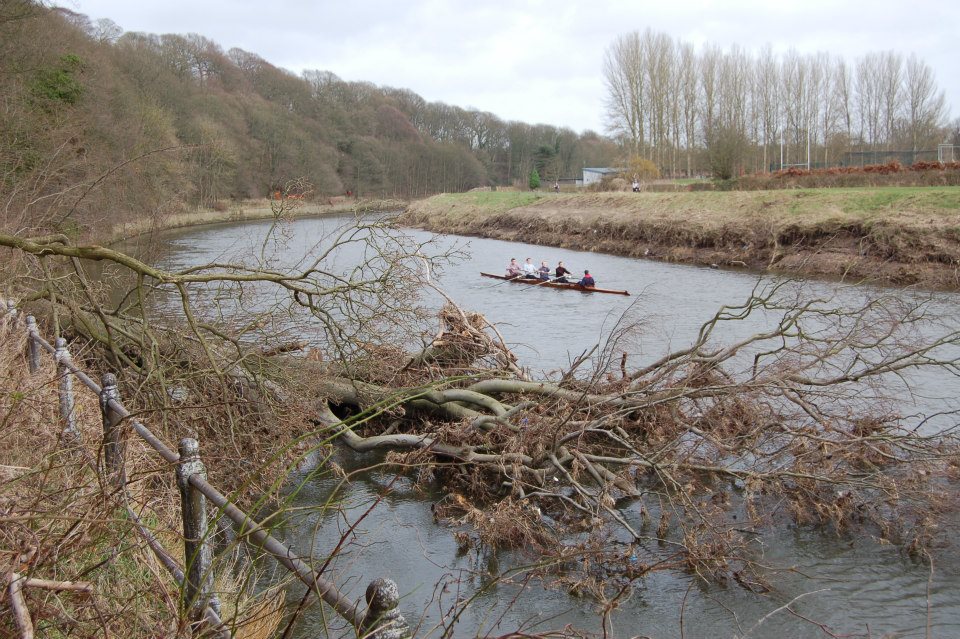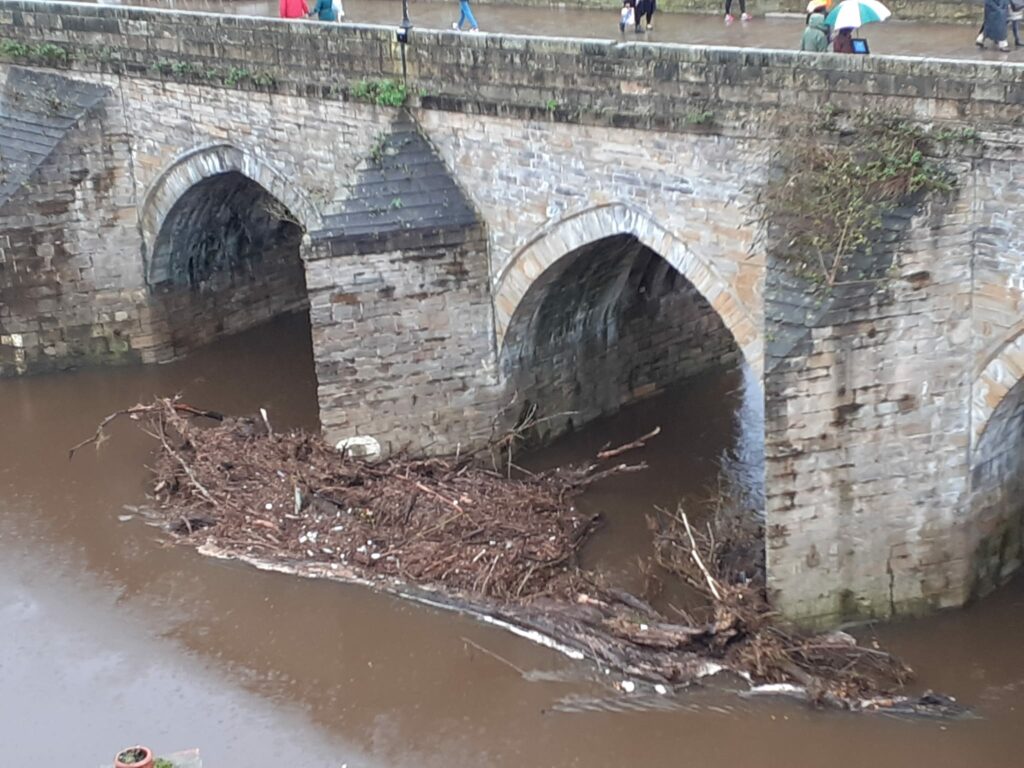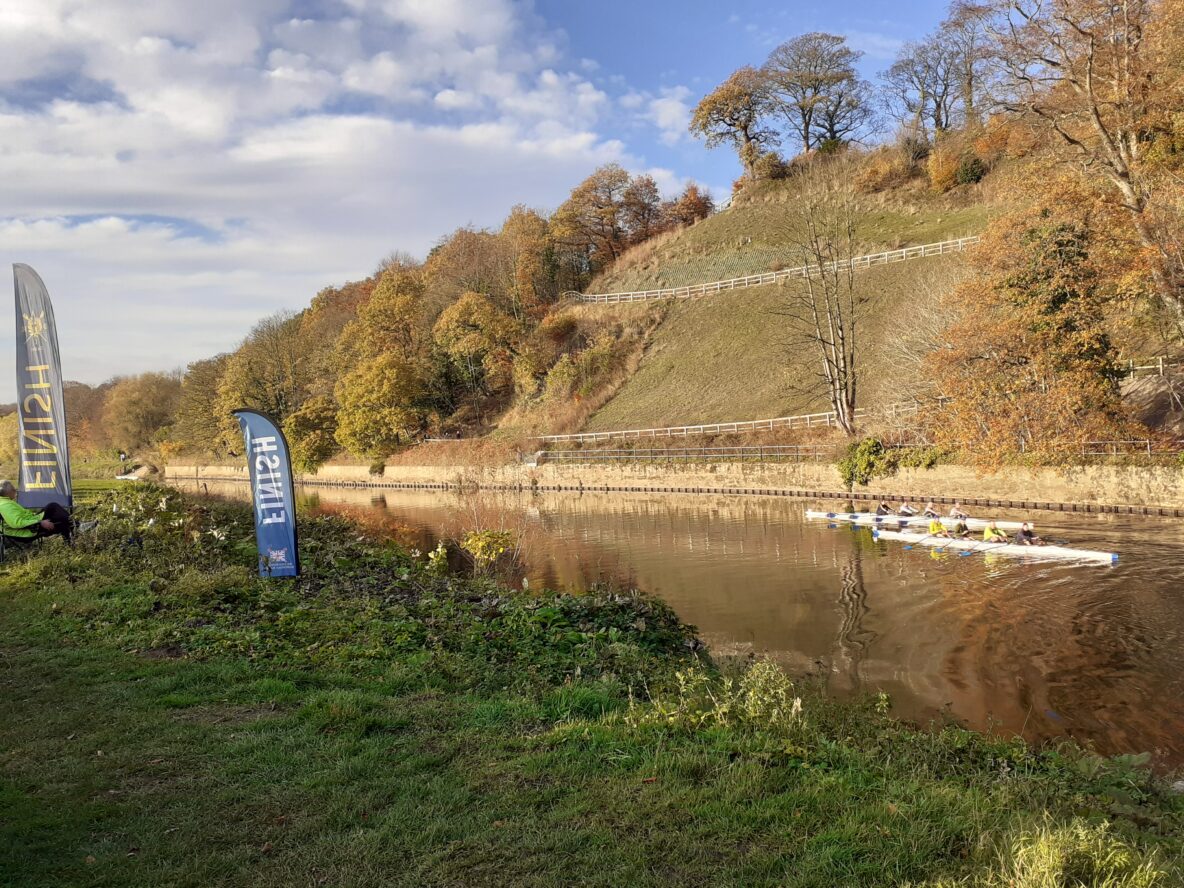Durham County Council has announced the designation of Pelaw Wood as a new Local Nature Reserve.
After many years the required agreement was obtained in May when Natural England approved an application by the County Council. As a Nature Reserve the land will be managed by the Council which will help to secure its future and use for generations to come.
Councillor Mark Wilkes, Cabinet member for neighbourhoods and climate change, said: “Pelaw Wood Nature Reserve is a beautiful woodland, and we want to make sure that everyone who lives nearby can make the most of this stunning scenery.”
Since 2003 the Friends of Pelaw Wood have carried out regular work to maintain and protect the environment and landscape in the vicinity of the wood.
Natural England was established in 2006 as the government’s adviser for the natural environment in England, helping to protect and restore our natural world.

Tony Ewin, Chair of the Friends of Pelaw Wood, with Cllrs Mark Wilkes of Durham County Council and Carole Lattin of City of Durham Parish Council (photo Durham County Council)
Tony Ewin, chairman of the Friends of Pelaw Wood, said: “It is very gratifying that Pelaw Wood has been designated a Local Nature Reserve. This recognises the value accorded to this wood by the people of the neighbourhood. I would like to thank the Council for its work in securing the designation.”
Covering approximately 30 hectares Pelaw Wood was once part of the estate of Old Durham and overlooks the River Wear near the start of the Durham Regatta course. Over the years the steep slope of the valley at this point has led to some significant issues that have impacted the rowing community, notably landslips in 2013 and 2014 which led to several trees falling down the bank and creating an obstruction in the river and an added hazard for rowers until they could be removed. Durham County Council undertook a project to stabilise the ground and engaged specialist geotechnical engineers to carry out further investigations and analysis of the situation.

Crew avoiding a fallen tree in February 2013
As a result further tree felling was undertaken which required part of the river to be buoyed off as a safety measure. The slope was covered with a geotextile mesh to hold soil in place and help alleviate further slippages, and the riverside footpath closed for 4 years while restoration work was being carried out. Reopened in 2017 the path is a vital resource for coaching rowing crews from the bank. The top photo shows crews passing the lower and middle paths of Pelaw Wood at Durham Autumn Small Boats Head.
Weather and environmental issues have long been factors affecting the sustainability and appearance of the riparian environment, and recent efforts by volunteers and the County Council to clear debris from the weirs have been very welcome.

The first Flood of winter the week after Durham Autumn Small Boats Head leaves a blockage at Elvet Bridge and renders it impassable to boats
As well as being another accumulation point for waterborne debris the City’s historic bridges have an interesting history.
Originally constructed in the 12th century, Framwellgate Bridge and Elvet Bridge formed part of the city’s defences, controlling entry to the Peninsula, and in medieval times would have been busy centres of commerce. The significant part played by the river in the social history of Durham can be traced from the fascinating stories told by objects retrieved from the riverbed in recent years by underwater archaeologist Gary Bankhead, available in the online exhibition Hidden Stories from the River Wear.
Prebends Bridge is more recent having been built between 1772 and 1778 as a replacement for the earlier crossings of 1574 and 1696 (the abutment of which remains visible a few metres upstream). The 1696 bridge was destroyed by the Great Flood of 1771, as were many others in the North East, including the old Tyne Bridge and three arches of Elvet Bridge. The height of the floodwater affecting the River Tyne on November 17th 1771 can be seen from the mark on the wall of the Boathouse pub in Water Row next to Tyne Amateur Rowing Club. The alternative site for the new Prebends Bridge was chosen for aesthetic reasons to take advantage of the fine views afforded of the Cathedral.

Great Flood level mark at Water Row

The Boathouse, Water Row
Severe weather effects continue to be experienced as illustrated by Storm Arwen in 2021.
Assuring the future management of the riverbank opposite the sandbar is good news for the future of the Regatta at a time when the granting of an extension to the Environment Agency permit gives renewed optimism for dredging the river.
Moreover with the 190th Durham Regatta approaching in 2023 a plan for the management of waterborne debris to relieve the strain on bridges and weirs will be an important factor in ensuring the continued enjoyment of rowing in Durham.

